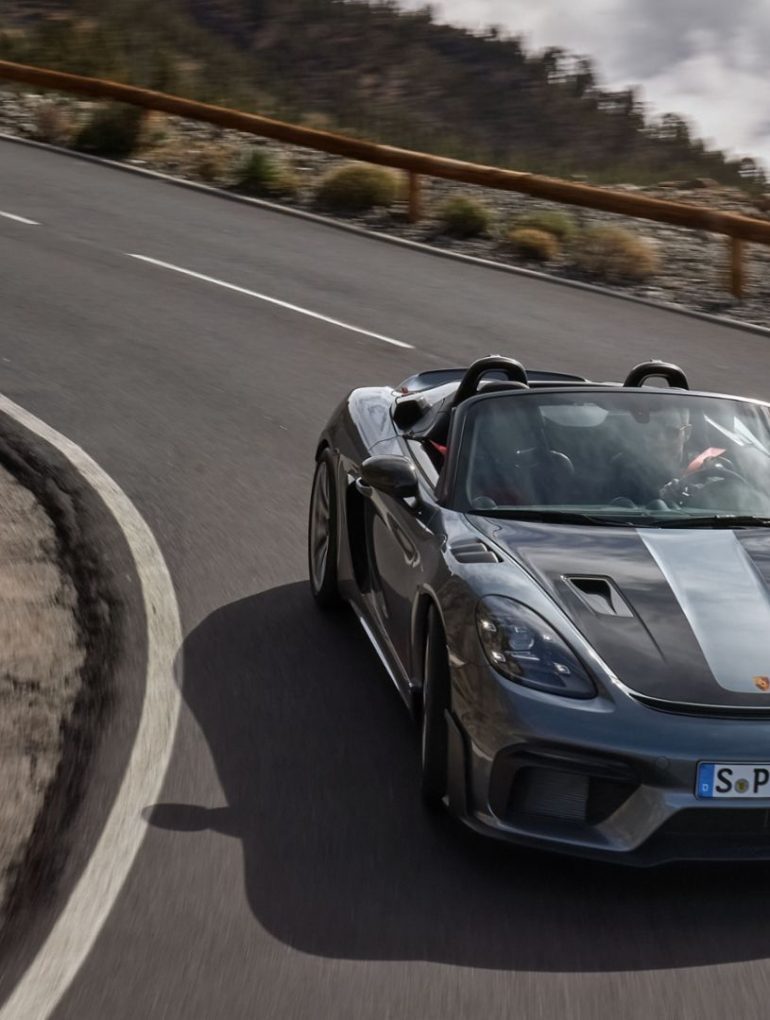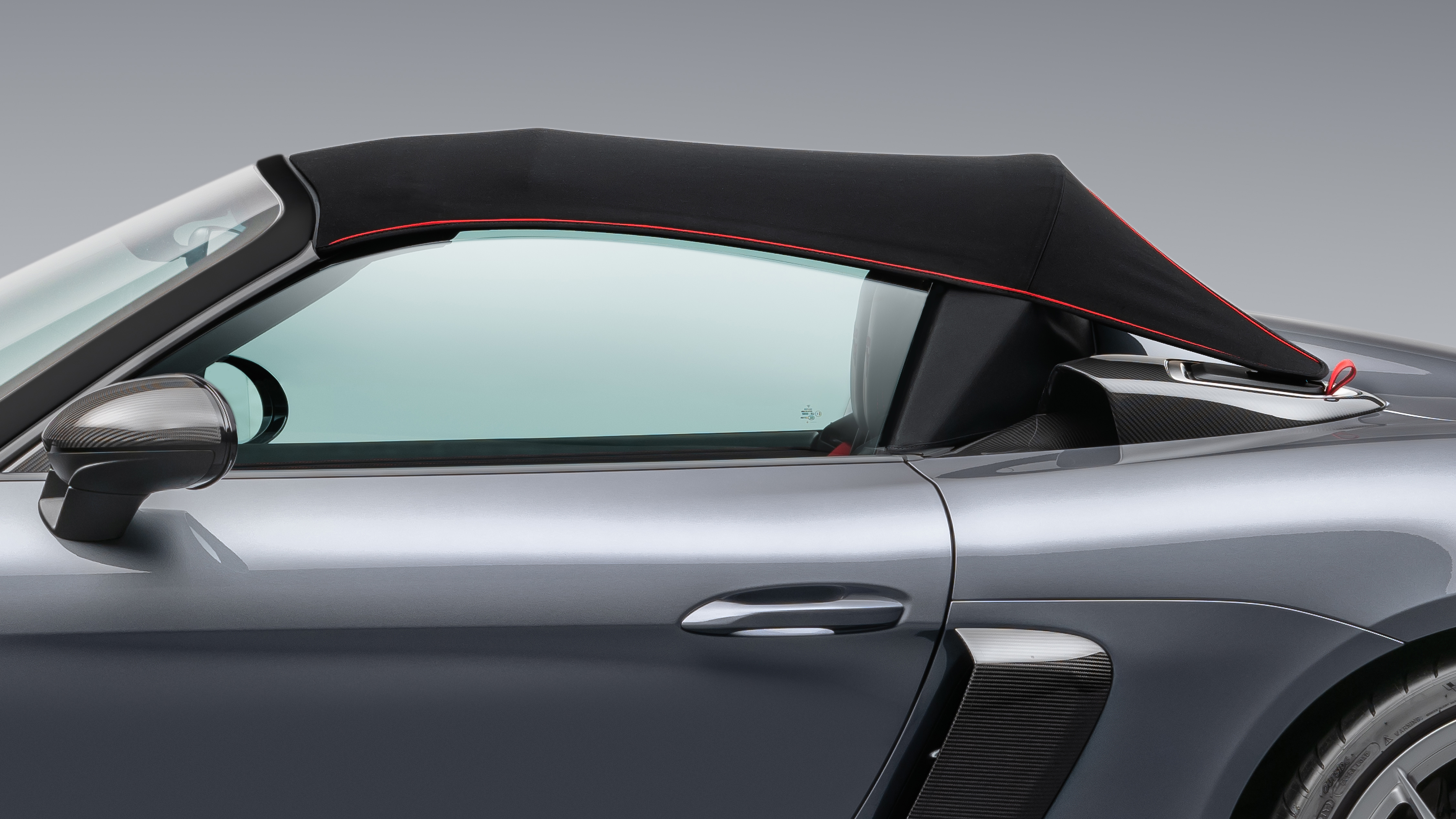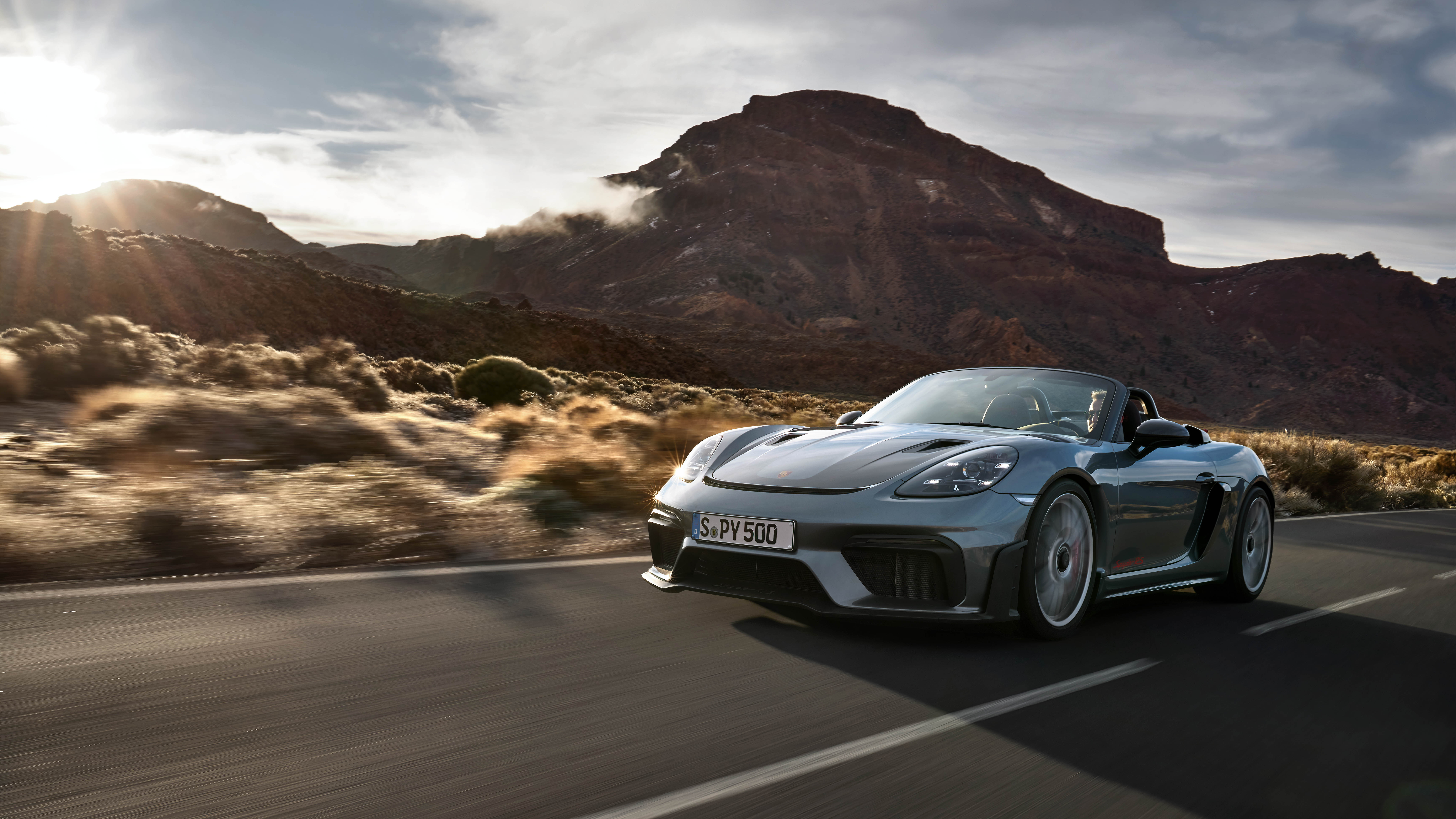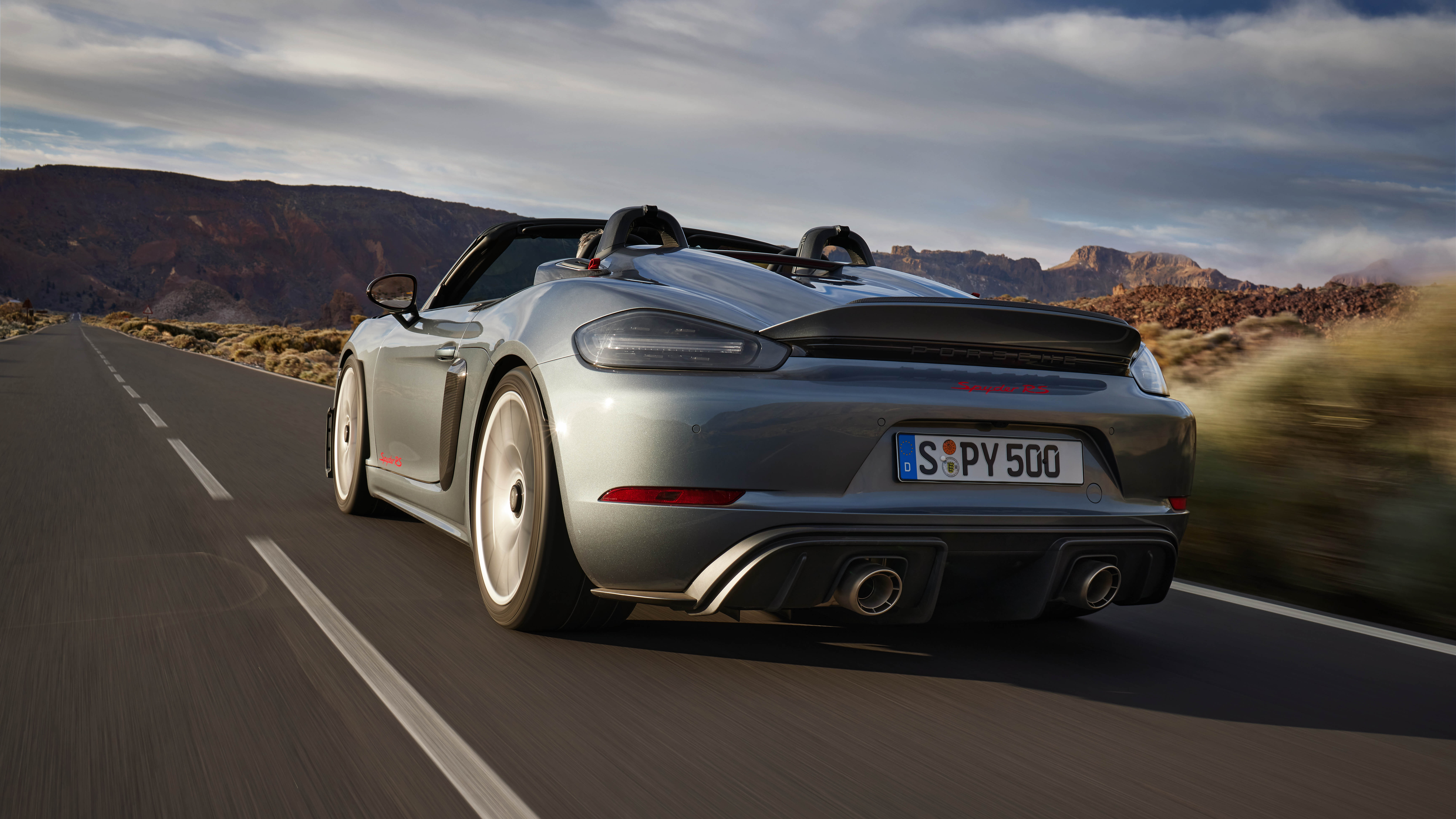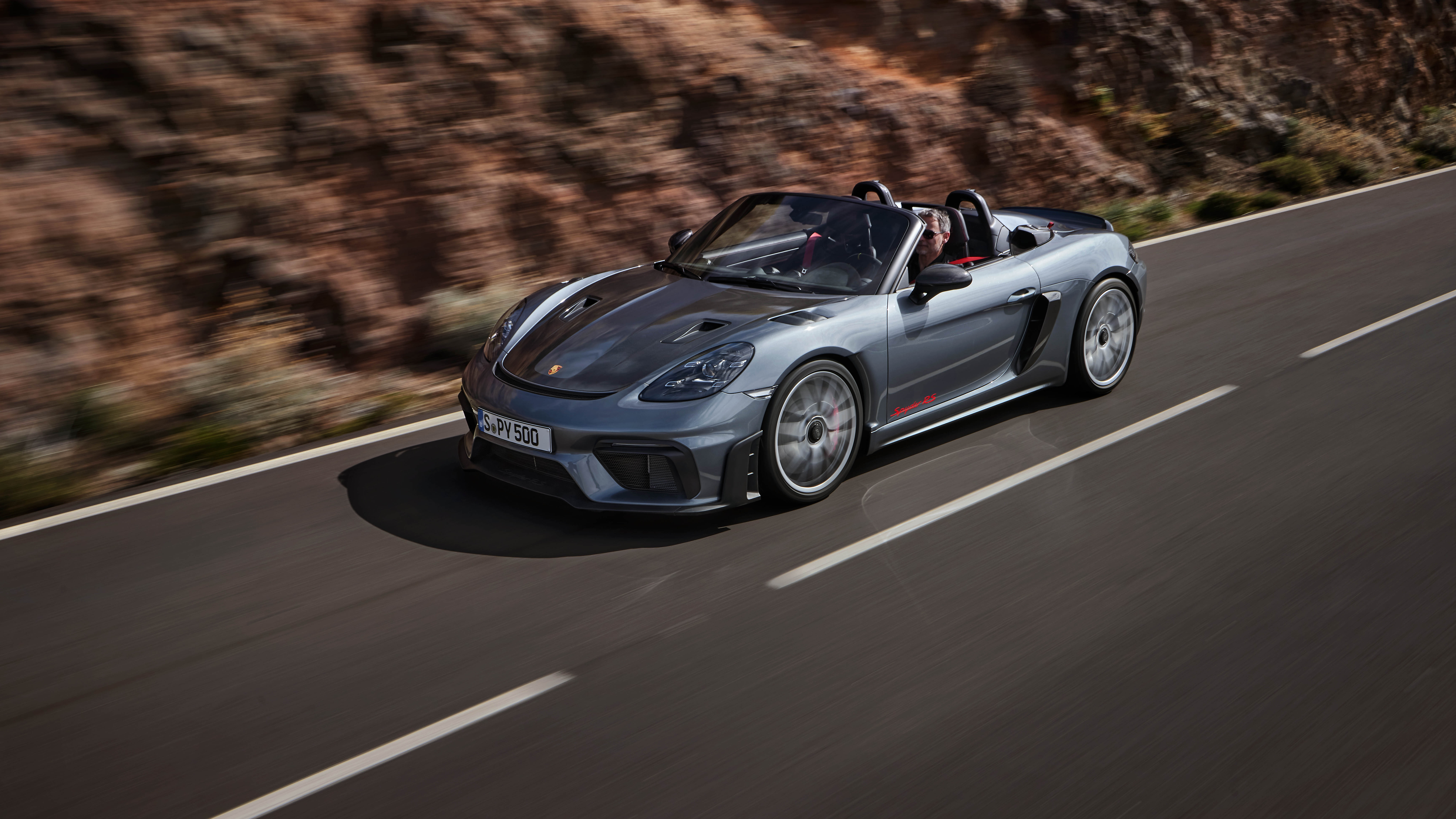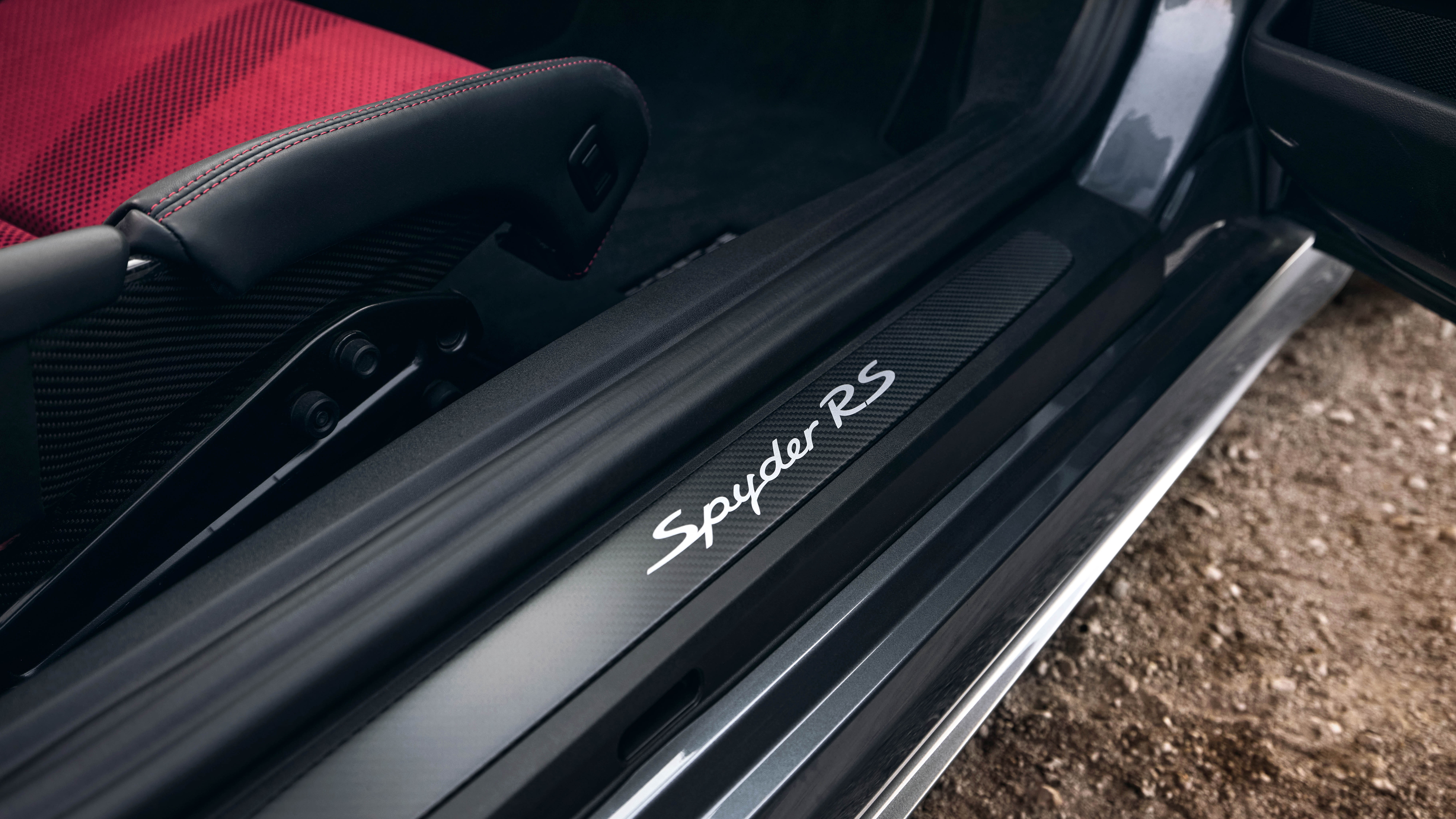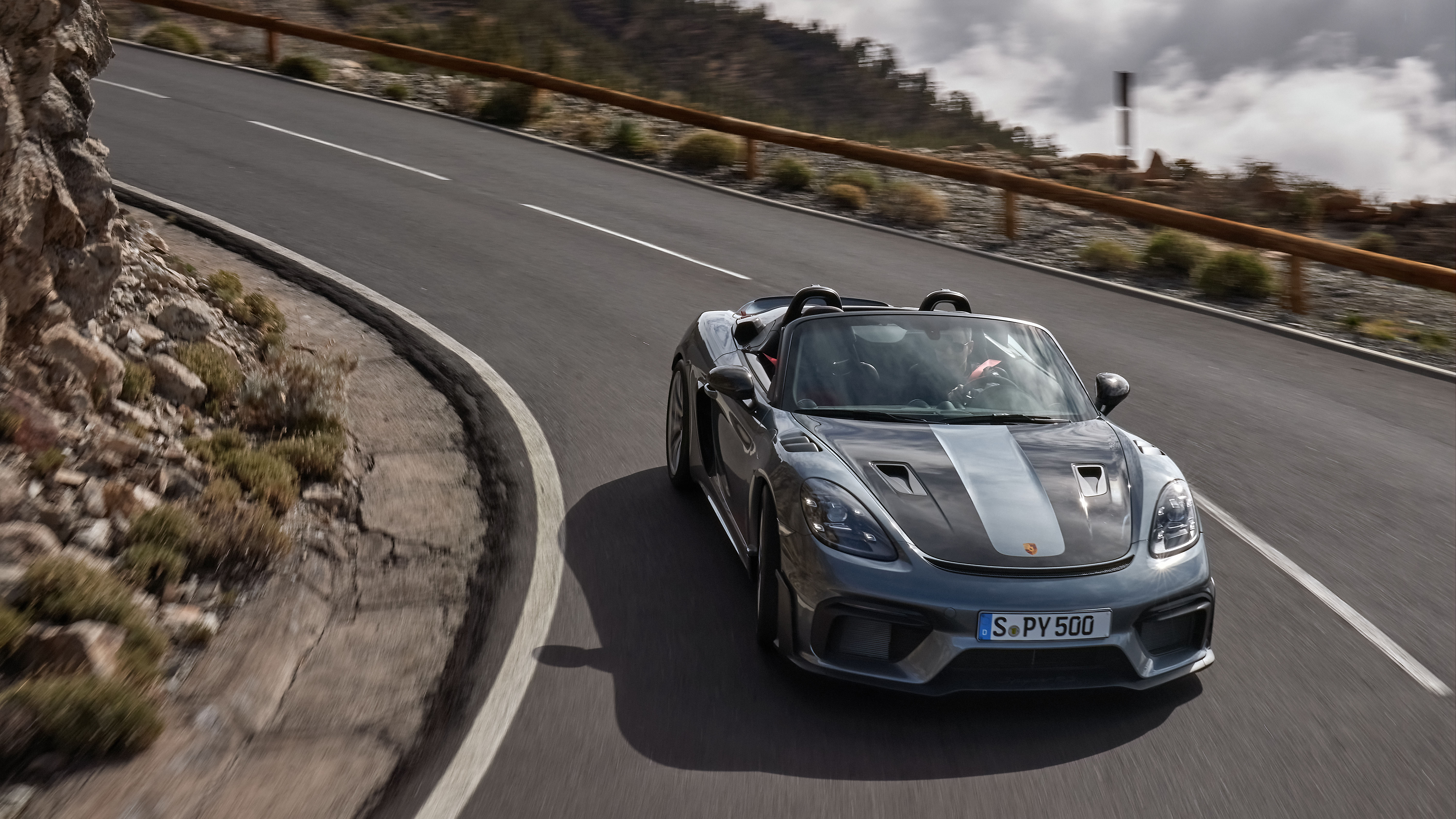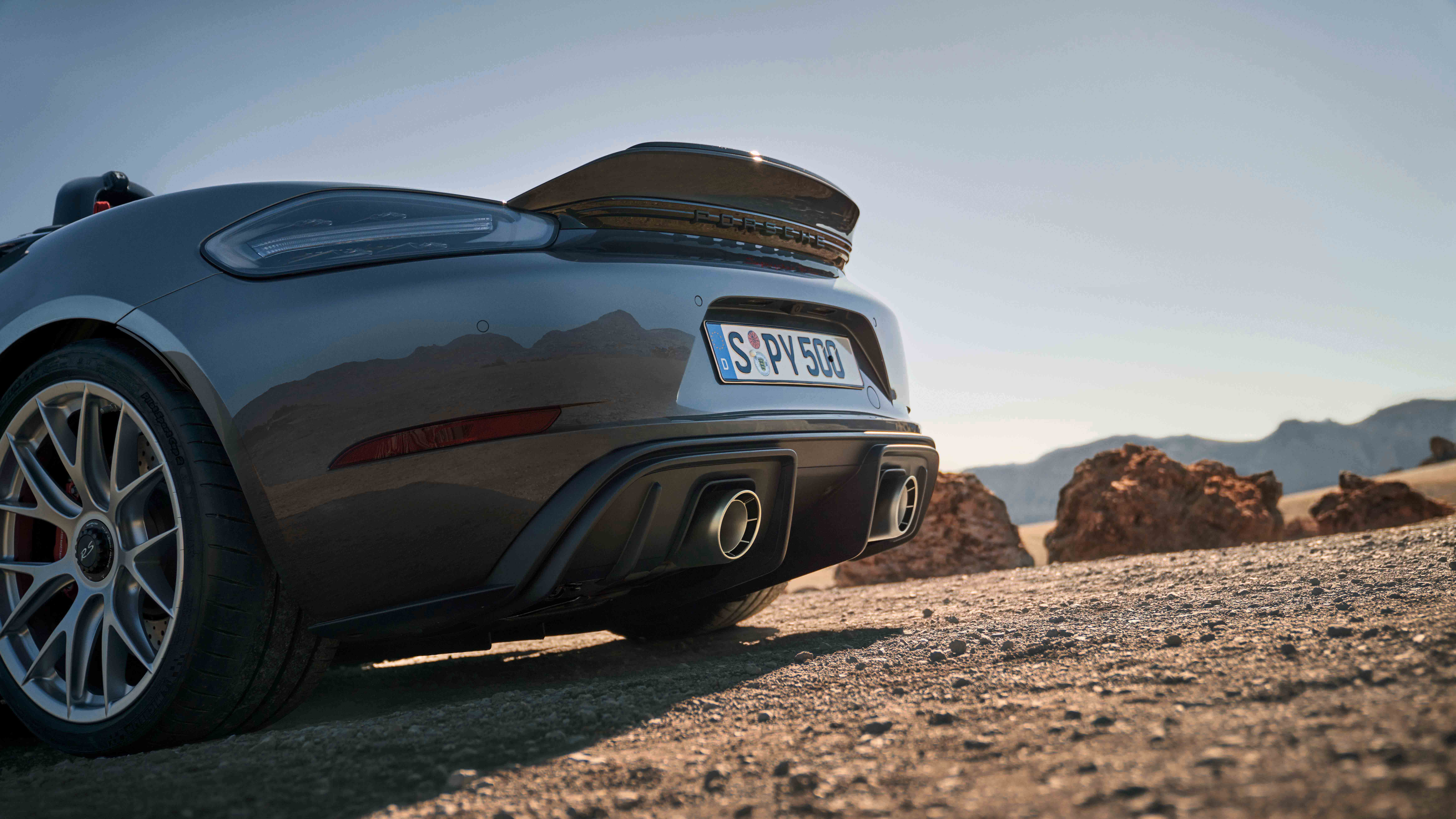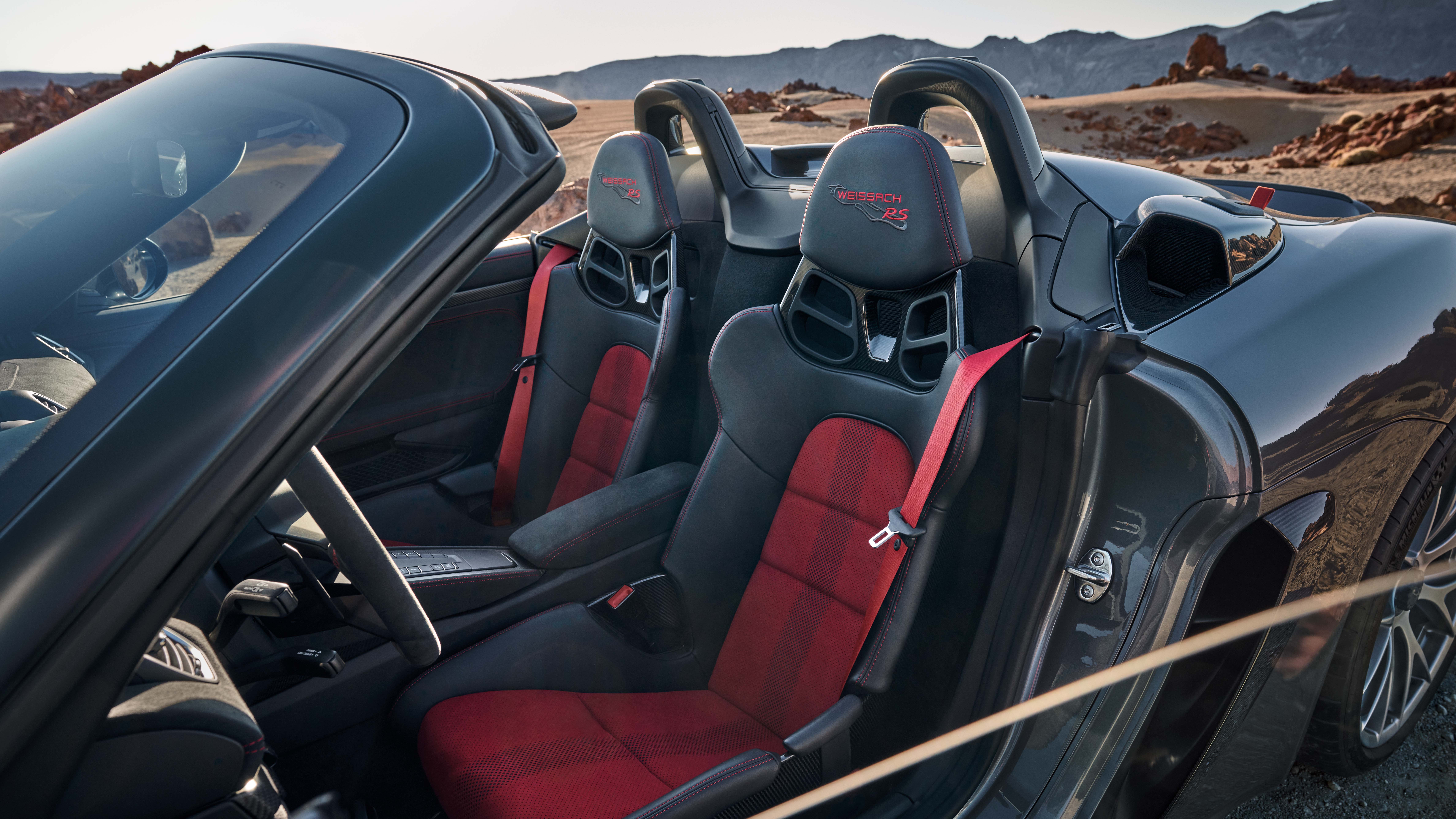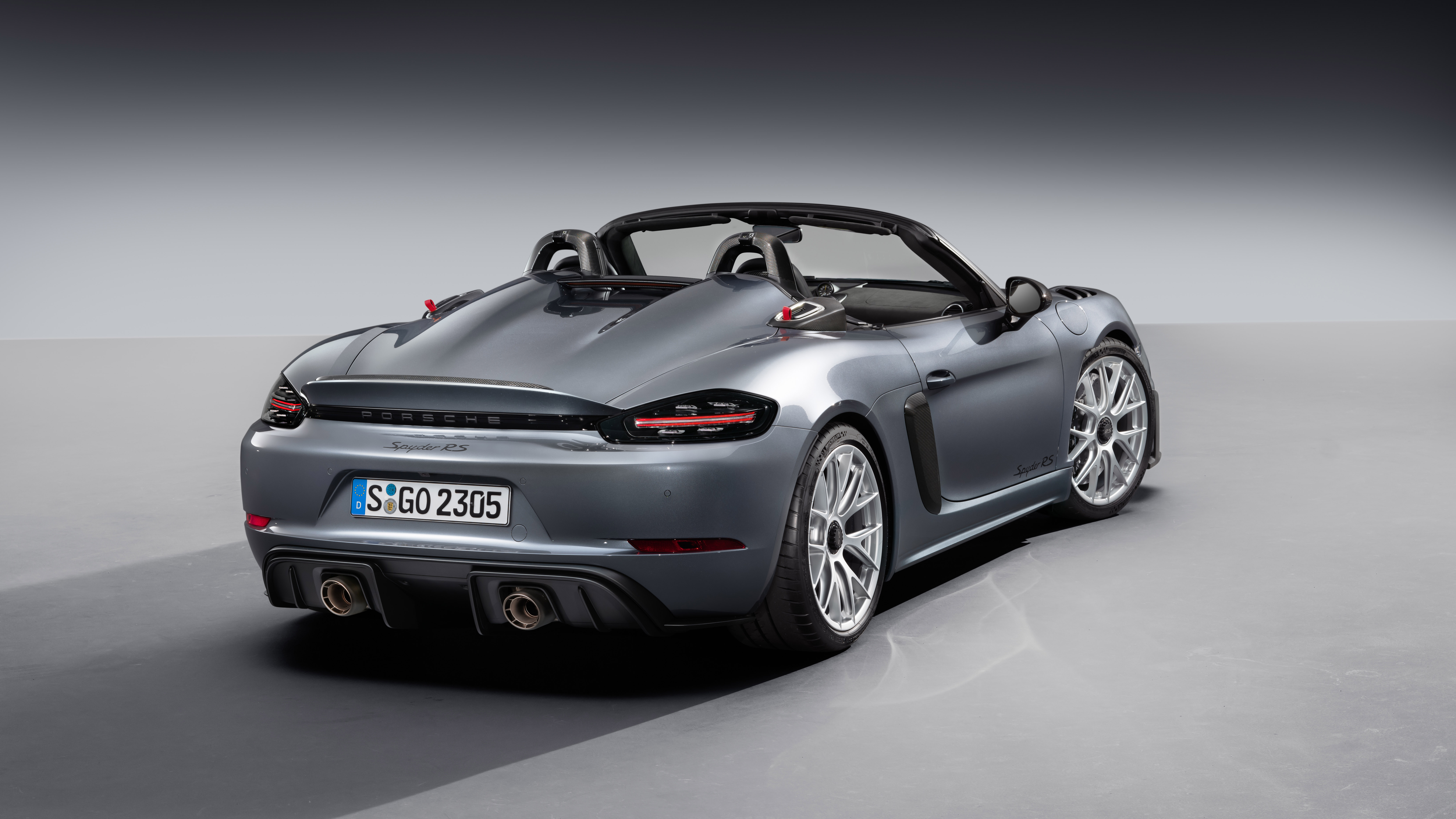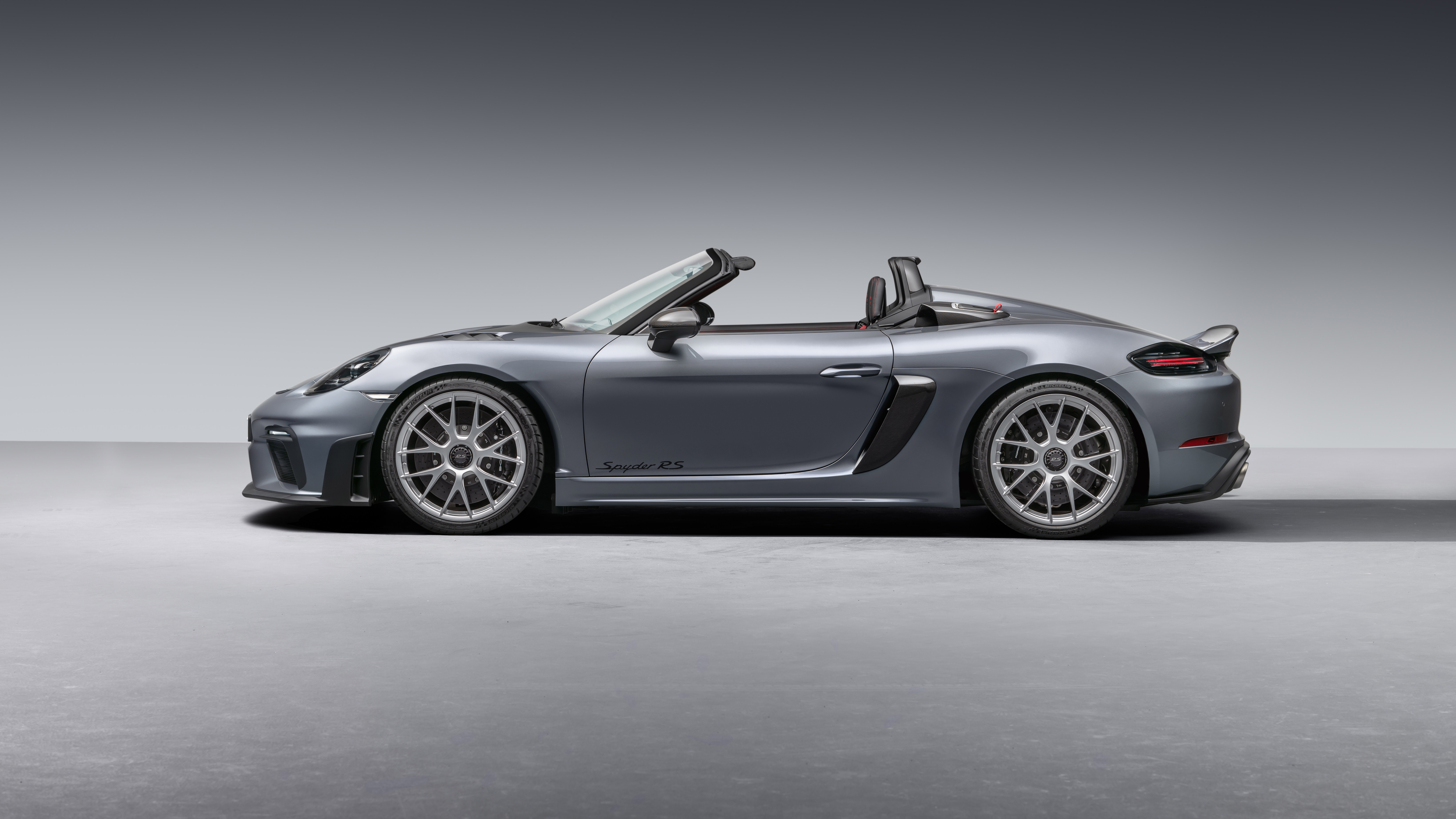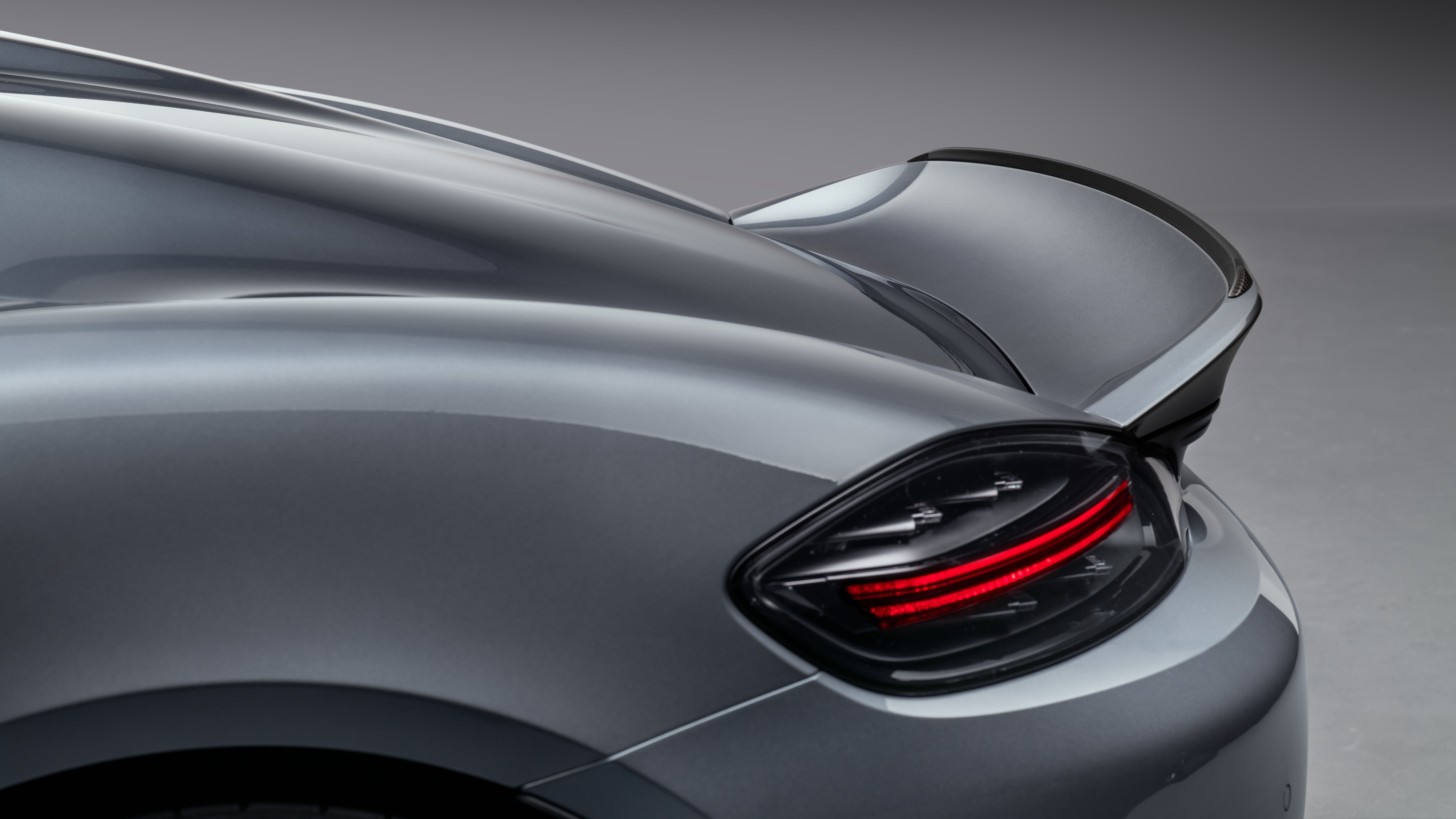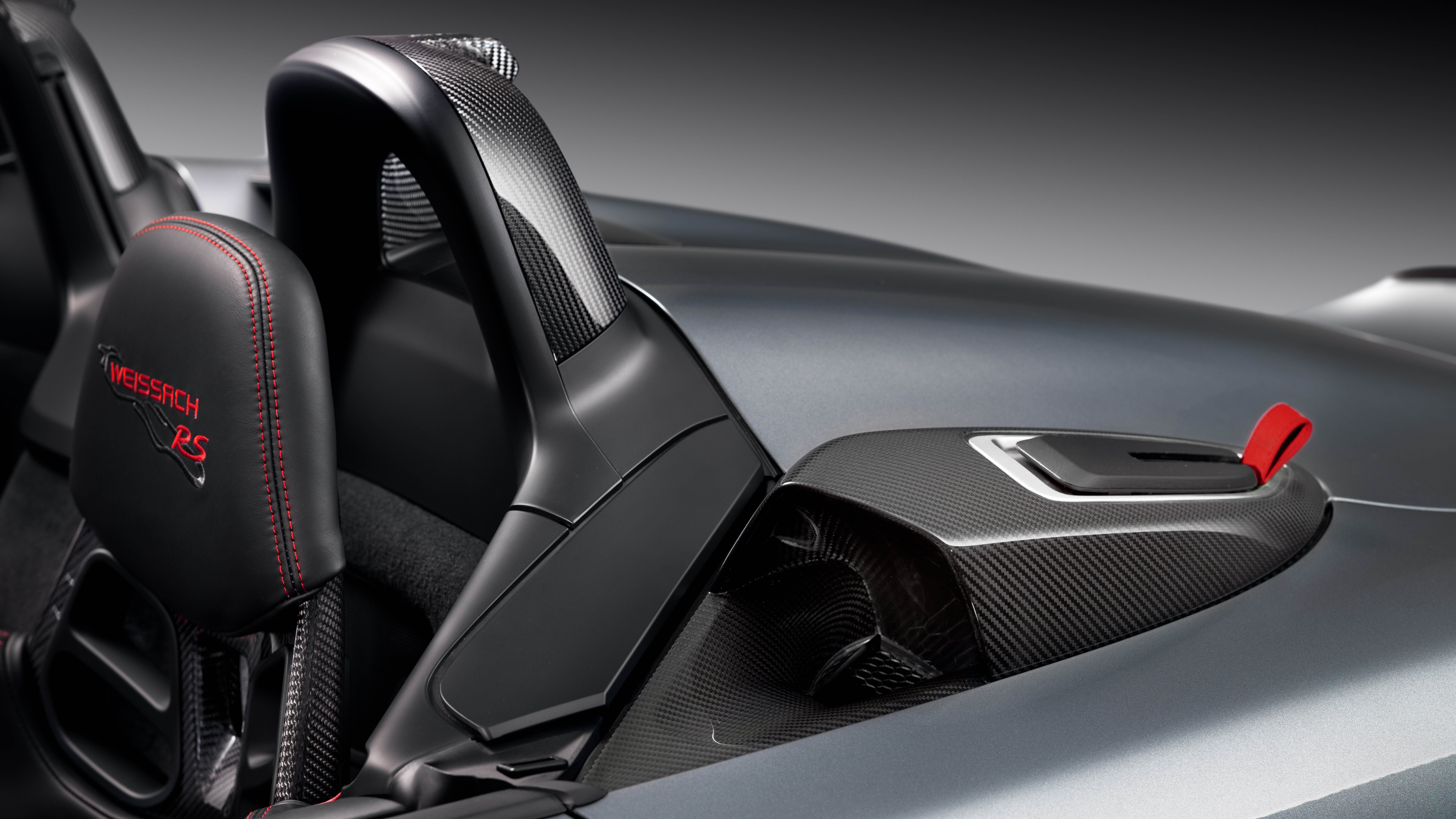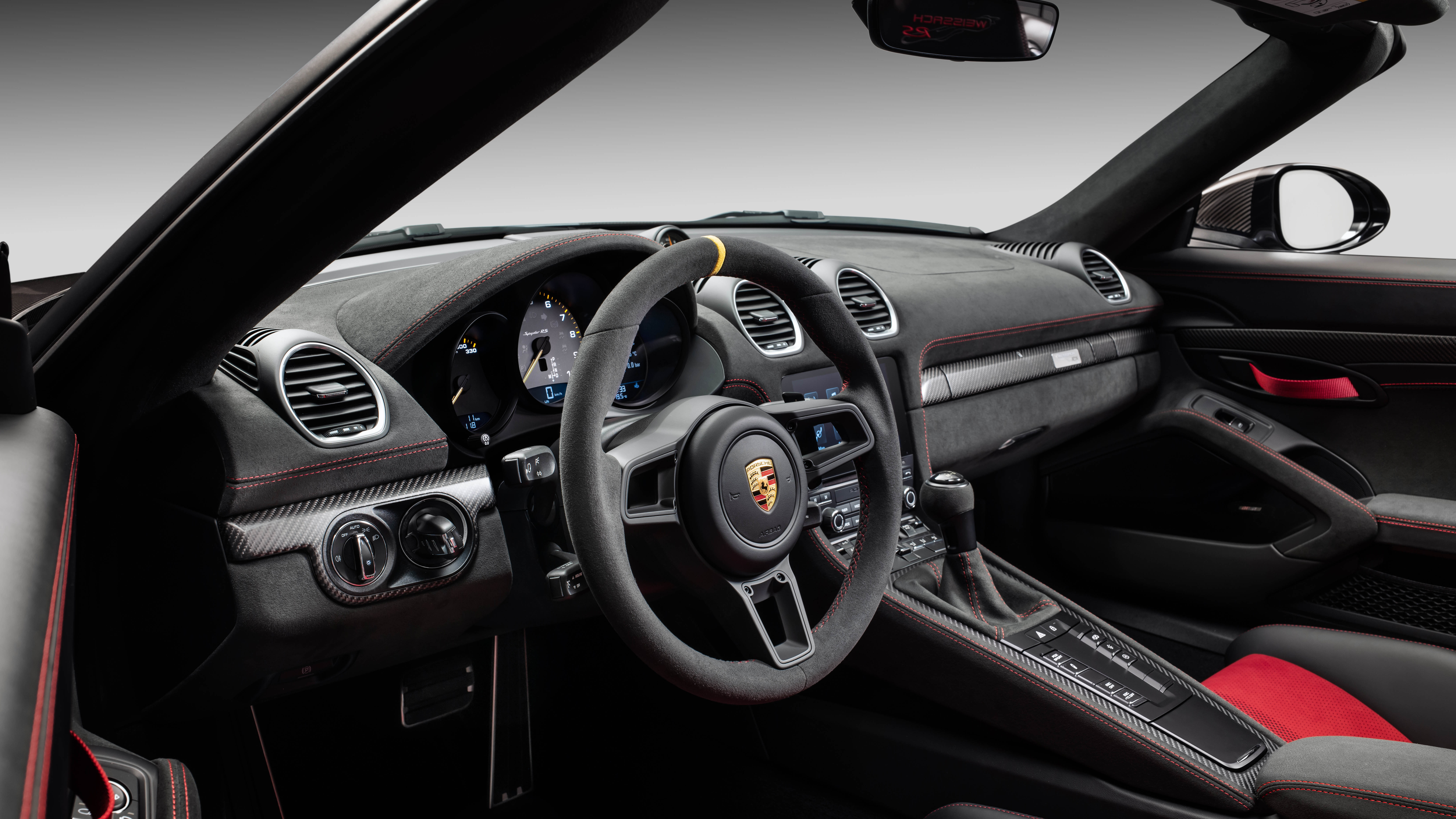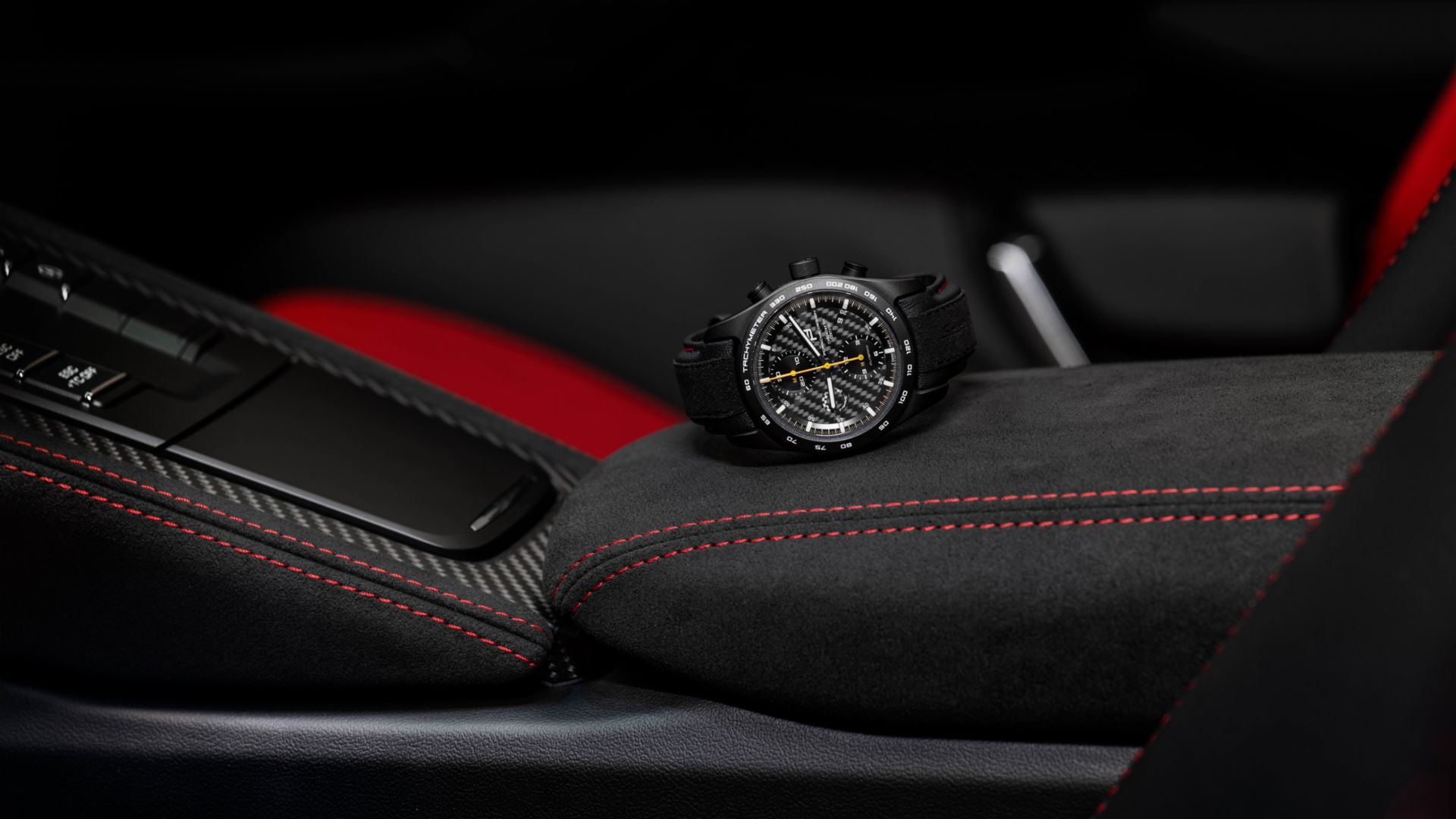Long before it first arrived on the scene, the new Porsche 718 Cayman GT4 RS just made sense. It filled a gap in the line-up that only such a car could fit perfectly into.
After some ramblings about how a 4 RS might become a PR nightmare for Porsche—with it likely to impose itself too deep into GT3 territory—the car was unveiled, and both the automaker and its buyers have never looked back.
Indeed, it was the perfect candidate to complete Porsche’s 4-3-2 RS trifecta. A lot more power, a lot more aero, perfectly balanced as ever. As part of the RS club, buyers are also now able to unlock the quintessential Weissach Package for the first time in a Cayman model.
On paper and in theory, it remains in subordination to the top dog 911 models. In reality however, many have argued that the 4 RS has been purposely underrated so as to not upset the established hierarchy…
Precedent Setting
Traditionally, RS models have been the gold standard for Porsche road car performance with a focus on achieving the fastest lap times possible at track and club racer events. Case in point: all GT3 RS and GT2 RS have been exclusively equipped with the lightning-quick-shifting PDK transmission since the beginning of the 991-generation.
While that philosophy hasn’t changed with the new GT4 RS per se, Porsche has been willing to forgo absolute pragmatism in favor of a bit of purist-pleasing fun. Case in point: the brand new 2024 Porsche 718 Spyder RS.
This slight tweak to a once rigid philosophy means that you can now experience top-down driving at the highest echelons of RS performance. Another “first” from Porsche.
Depending on who you ask, the Spyder RS is either the worst kept secret ever, or a complete surprise. Those in the former camp would’ve seen this coming from miles away, given that the regular GT4 models were also offered as “twins” in both the Cayman GT4 and 718 Spyder.
The rest were probably thinking that a convertible version—with its associated aerodynamic penalties, et al—would not be compatible with the idea of what an RS model is supposed to be. Nevertheless, the Spyder RS is here, and I don’t know a Porsche enthusiast who isn’t happy that it is.
Performance & Chassis
So far, we’ve spoken about how the new Spyder RS deviates from what is considered customary. However, to earn the famous badge, it does have to subscribe to most of the orthodox principles.
That being said, the Spyder RS is powered by the exact same drivetrain used in the Cayman GT4 RS—a 4.0L naturally-aspirated flat-6 engine which revs up to 9,000 rpm, produces 493 hp / 331 lb-ft of torque, and is mated exclusively to a 7-speed PDK transmission.
The advertised 0-60 mph time of 3.2 seconds is virtually identical to that of the Cayman GT4 RS, the latter of which has been independently tested as being even quicker, further giving credence to the idea that the 718 RS cars have been artificially rated lower on official spec sheets.
According to Porsche, the Spyder RS will offer a “…more relaxed, characteristically convertible-style setup” which means that the suspension settings have been slightly softened compared to that in the Cayman GT4 RS. It does however, remain more performance-oriented over the regular Spyder with features such as PASM, a lower ride height, spherical suspension joints, a mechanical limited-slip differential, and 20″ centerlock wheels, provided as standard equipment.
While the Spyder RS isn’t targeting the lap-time-obsessed demographic of Porsche’s customer base, it will no doubt offer just as much performance as its fixed-roof counterpart to the overwhelming majority of owners; those who have neither the intention nor the resume to hunt down tenths of seconds at the circuit. That’s better left in the hands of the Kerns and Bergmeisters of the world, anyway.
In other words, the 718 RS cars offer the rare option of having a hard top or a soft top, and this decision should ultimately come down to your personal tastes.
Design & Interior
Up front, the Spyder RS presents familiarly, with the same fascia as seen on the Cayman GT4 RS, albeit with a shortened front splitter to provide more aerodynamic balance to the wingless (but with ducktail spoiler) convertible. Naturally, the roof and rear silhouette are where the Spyder RS truly distinguishes itself, with a manually-operated fabric roof top and classic “clam shell” tonneau providing the expected roadster design cues.
Porsche engineers focused a lot of their energy on weight reduction too, with the Spyder RS tipping the scales at 1,410 kg—roughly 40 kg less than the regular Spyder. This is thanks in large part to a much lighter soft-top mechanism, and more lightweight amenities such as the use of pull-straps instead of door handles. That’s just so RS, isn’t it?
For the discerning buyer who really wants to spec out their Spyder RS, the Weissach Package is a must. Not only will the car become more aggressive and carbon-fiber-endowed with this option selected, but it’ll be lighter too, with other fixtures such as carbon ceramic brakes and an ultra lightweight titanium exhaust being amongst the offerings.
Inside the cockpit, things should also feel very much the same as the Spyder, with carbon bucket seats coming standard with big roll hoops stationed right behind. Otherwise, only finer details such as stitching, badges and the instrument cluster, will provide clues and reminders that you’re sitting in something truly special.
Pricing & Availability
Porsche has stated that the new 718 Spyder RS will begin arriving at dealerships sometime in the spring of 2024. Base MSRP is slated to be $160,700 USD, which is almost $20,000 USD more than that of the Cayman GT4 RS, though this premium is typical with other Porsche convertible models which have an equivalent fixed-roof variant.
No word yet on production numbers, but I have been informed that current orders have all been spoken for and waiting lists are getting longer by the day. If you’re on the fence, don’t wait around.
We look forward to providing more information and content on the 2024 Porsche 718 Spyder RS—including journalist reviews and the inevitable Nürburgring lap video—as it becomes available. Stay tuned!
Click here to configure your own Porsche 718 Spyder RS model.
Image Gallery
Video Gallery
Official Press Release
Porsche crowns the 718 mid-engined model line with a sports car designed for maximum driving pleasure: the new 718 Spyder RS is the open-top counterpart to the 718 Cayman GT4 RS. For the first time, the 368 kW (500 PS; 718 Spyder RS: Fuel consumption* combined (WLTP) 13.0 l/100 km, CO₂ emissions* combined (WLTP) 294 g/km,911 GT3: Fuel consumption* combined (WLTP) 12.9 l/100 km, CO₂ emissions* combined (WLTP) 293 g/km) naturally aspirated six-cylinder boxer from the 911 GT3 features in an open-topped mid-engined sports car. The same lightweight power unit with its high-revving design also powers the Porsche 911 GT3 Cup racing car. The exceptionally lightweight and purist-pleasing manual soft-top roof of the 718 Spyder RS makes the highly evocative sound of the engine an even more compelling experience. The effect is further heightened by the standard lightweight stainless steel sports exhaust system and the distinctive process air inlets on the sides behind the headrests.
High-revving naturally aspirated engine and resolutely lightweight construction
The powertrain of the new 718 Spyder RS is identical to that of the 718 Cayman GT4 RS coupe. The six-cylinder boxer engine, with its cylinder displacement of 4.0 litres, revs up to 9,000 rpm and generates an output of 368 kW (500 PS) and maximum torque of 450 Newton metres. Combined with a short-ratio seven-speed PDK transmission, the six-cylinder engine catapults the two-seater roadster from 0-100 km/h in 3.4 seconds. The car hits the 200-km/h mark in just 10.9 seconds. Compared to the 718 Spyder without the ‘RS’ designation, the new range-topper not only benefits from an additional 59 kW (80 PS), but also accelerates to 100 km/h half a second faster. The top speed is now 308 km/h instead of 300 km/h.
Like every modern RS model, the new 718 Spyder RS is available exclusively with the Porsche dual clutch transmission (PDK). This gearbox shifts through its seven gears at lightning speed and guarantees maximum performance. The gearshift paddles allow drivers to keep their hands on the steering wheel even when shifting gears manually. Alternatively, the driver can use the ergonomically designed selector lever on the centre console. In addition to the more powerful engine, the new model’s lower weight also contributes to better performance: at 1,410 kilograms, the Spyder RS weighs 40 kg less than the 718 Spyder with PDK and is actually five kilograms lighter than the closed 718 Cayman GT4 RS. The Spyder RS represents the latest high-water mark of the model line started in 2016.
Balanced aerodynamics
The front end of the new Porsche 718 Spyder RS is almost identical to the front end of the 718 Cayman GT4 RS. The standard front bonnet is made of CFRP and features a wide air outlet above the bumper. The two NACA ducts enhance brake cooling without adversely affecting the Cd value. Sideblades on the outer ends of the bumper increase downforce. The front spoiler lip is slightly shorter than on the 718 Cayman GT4 RS, which in conjunction with its large rear wing produces higher overall downforce on the Cayman and therefore requires a larger spoiler lip to achieve aerodynamic balance. Instead of a wing, the 718 Spyder RS features a striking tear-off edge shaped like a ducktail. All aerodynamic components are intricately coordinated. They maintain the car’s aerodynamic balance and ensure maximum driving stability at high speeds.
Purist soft-top design
The new 718 Spyder RS comes with a manually operated single-layer lightweight soft-top. The design is amazingly compact, consisting of two parts: a sun sail and a weather deflector. Both are completely removable and can be stowed together or singly in the vehicle. The sun sail alone can also be used as a ‘Bimini top’, thereby protecting the driver and front passenger from intense sunlight. In this case, the passenger compartment remains largely open to the side and behind the passengers.
Together with the weather deflector, this creates a complete top that provides effective protection against rain when the side windows are raised. The entire roof, including mechanical parts, weighs just 18.3 kg. That’s 7.6 kg less than the 718 Spyder and 16.5 kg less than in the 718 Boxster. Drivers who wish to shave an additional eight kilograms from the weight of the vehicle can leave the top at home entirely, weather allowing.
Sports suspension of the highest precision and agility
The chassis of the 718 Spyder RS uses components from the 718 Cayman GT4 RS and the 718 Spyder and is designed for maximum driving pleasure on winding roads. It comes standard with Porsche Active Suspension Management (PASM) with sports tuning and has been lowered by 30 millimetres. It also features Porsche Torque Vectoring (PTV) with mechanical limited-slip differential, ball-jointed suspension bearings and 20-inch forged aluminium wheels. The behaviour of the chassis is characterised by razor-sharp steering precision, as well as agile and extremely neutral handling. The ride height, camber, track and anti-roll bar can all be adjusted individually. Compared to the 718 Cayman GT4 RS, spring and damper rates have been reduced to achieve a more relaxed, characteristically convertible-style set-up.
Performance-focused interior
A sporty character defines the inside of the car too: the interior is reduced to the functional and ergonomic essentials. The grippy RS sports steering wheel is covered with Race-Tex and features a yellow 12-o’clock marking. The standard full bucket seats are made of lightweight CFRP in a carbon-weave finish and offer particularly impressive lateral support. The seat covers are made of black leather, while the perforated Race-Tex seat centre features a contrasting colour with a black background. The contrasting colours are Arctic Grey or Carmine Red.
A ‘Spyder RS’ logo in the corresponding colour is embroidered on the headrests. The dashboard and trims are covered with leather. Available exterior colours include four plain and three metallic paints, including the new Vanadium Grey Metallic as well as the special colours Arctic Grey, Shark Blue and Ruby Star Neo.
Optional Weissach Package and matching chronograph
A Weissach Package is also available for the Spyder RS as an option. The exceptionally lightweight, optional forged magnesium wheels can be ordered in combination with this particularly performance-focused equipment package. The sports exhaust system tailpipes here are made of titanium. The look is inspired by the limited-edition 935 from 2018. A visual highlight inside the car is the upper part of the dashboard covered with anti-glare Race-Tex. Exclusively available to buyers of the Porsche 718 Spyder RS is a Porsche Design Timepieces handcrafted chronograph – a premium-quality watch from Porsche’s in-house watchmaking operation in Solothurn, Switzerland. Designed to match the configuration of the car, the particularly lightweight case is made of titanium, the dial is made of carbon and the strap is made out of vehicle leather. The rotor on the back echoes the respective wheel rim design on the 718 Spyder RS.
“The 718 Spyder RS raises driving pleasure to a new level for open-top cars,” says Andreas Preuninger, Head of GT Cars. “The combination of our unmistakable GT3 engine, the close-ratio transmission, compact dimensions, low weight, road-optimised racing suspension and maximum openness offers an extremely compelling and unfiltered driving experience.”
The new Porsche 718 Spyder RS celebrates its public premiere in June at the festivities marking 75 years of Porsche Sports Cars in Stuttgart-Zuffenhausen. Shortly afterwards, it will make an appearance at the Goodwood Festival of Speed in England.


